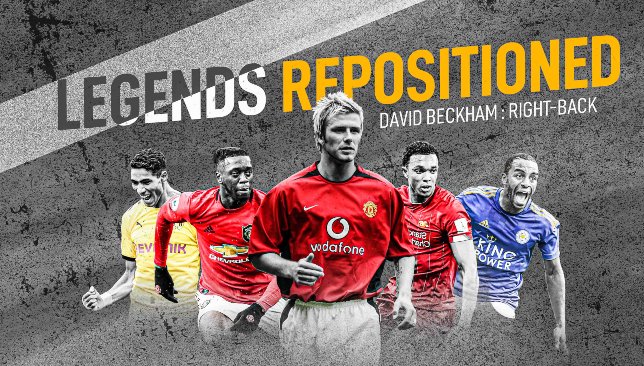
Football is constantly evolving and with data plus in-depth analysis growing exponentially in the modern game, new tactical innovations are made with increasing frequency.
As a result, formations are being manipulated in more creative ways and players of a particular skillset are being used in roles they perhaps wouldn’t be in previous decades.
Philipp Lahm was an ideal example. Renowned as one of the best right-backs around for most of his career, Pep Guardiola deployed him in midfield as the central cog in a possession-based system.
How many other players from the past would thrive in different positions in today’s game? How many more goals would Ryan Giggs score as an inverted winger in a front three? Could Fernando Redondo have been a stylish centre-back on the left side of a back three bringing the ball out and even attacking on the overlap?
In this series, we look at past legends and theorise the possible new positions within the tactics of the modern game.
We start with perhaps the most iconic of them all, David Beckham…
LEGEND: DAVID BECKHAM | RIGHT MIDFIELD
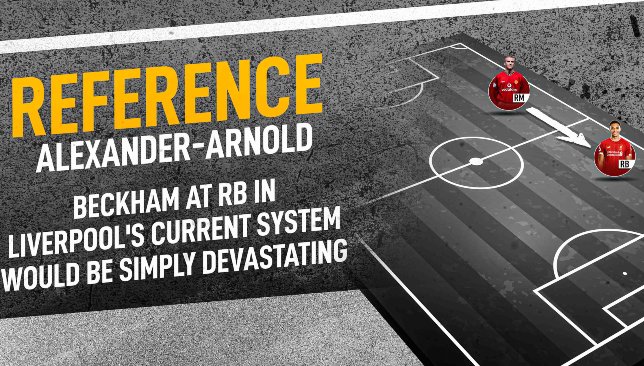
Position in modern game: Right-back
Point of reference: Trent Alexander-Arnold
Trent Alexander-Arnold’s role as Liverpool’s right-back has revolutionised the way we think about the position. A midfielder by nature, he’s incorporated that vision and passing range into his operations as a full-back and Jurgen Klopp has brilliantly implemented his talents into the team’s system.
Whether he’s switching play by pinging long diagonal passes to Sadio Mane or Andy Robertson on the opposite flank, tucking into midfield to help dominate possession and orchestrate build-up play or whipping in dangerous crosses in the final third, Alexander-Arnold can legitimately be classed as a playmaker.
It takes a very specific set of skills to emulate his game at right-back and David Beckham was abundantly blessed in every relevant category.
He would have no problem playing the Alexander-Arnold version of the modern right-back, perhaps even excelling beyond the Liverpool defender himself in certain aspects.
Beckham at right-back in a system such as the one Klopp has engineered today would be simply devastating.
Defending
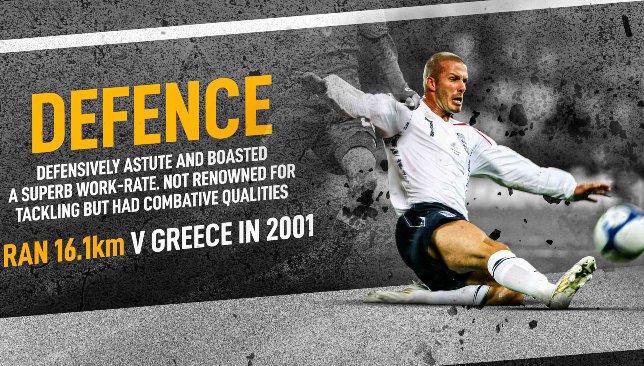
Gary Neville loved playing with Beckham ahead of him on the right flank for Manchester United and England because of his discipline and the support he offered in defence.
He was comfortable when retreating to that area of the pitch, defensively astute and boasted a superb work-rate that enabled him to get up and down his flank for the entirety of the game.
He wasn’t renowned for his tackling but it wasn’t a weakness either while his doggedness and combative qualities on the pitch made a mockery of how the media perceived him off it.
Beckham didn’t have searing pace and wouldn’t dribble past players frequently but those limitations, coupled with his intelligence and passing, ensured he rarely lost possession.
Passing
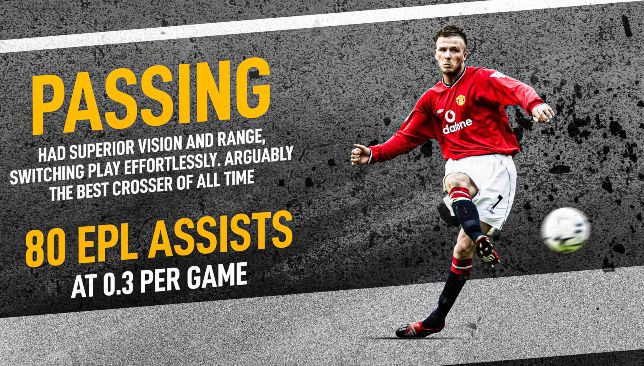
Over the course of his career Beckham also proved that he wasn’t lacking in his vision or passing range, in fact his attributes in those departments were grossly underrated. If not for the phenomenal midfielders he played alongside at Manchester United and Real Madrid, he may have had the opportunity to feature centrally more often, like he did in the twilight of his career.
Indeed, he started in central midfield during the 1999 Champions League final with Paul Scholes and Roy Keane both suspended while there’s a YouTube video of him operating in the position for Madrid against Deportivo La Coruna that paints a picture of what he might have been like as a deep-lying playmaker [spoiler alert: pretty good].
He could pass the ball as well as anyone and switched play effortlessly to the opposite flank when required. It’s that vision and classy execution which suggests he would be more than capable of carrying out Alexander-Arnold’s responsibilities in his side’s build-up play.
Rio Ferdinand once said: “David Beckham is up there with the best passers I’ve ever played with; over a long distance he was ‘radar foot’.”
In the final third, there’s no question that his crossing reigns supreme, perhaps even the best of all time. He didn’t need to beat his man, all he needed was a yard – or even half – to dismantle the defence with one of his perfect crosses.
Goal Threat
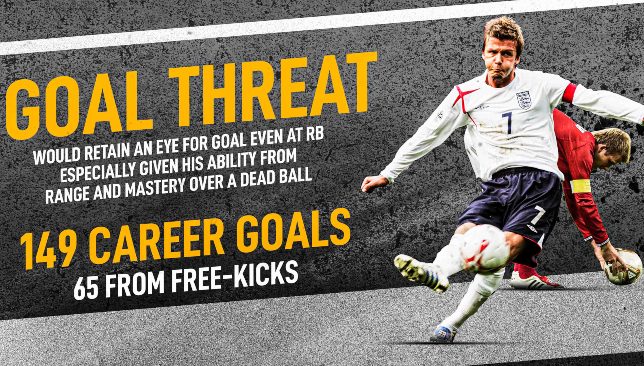
Once you score from inside your own half, you’ve unequivocally established yourself as a goal threat regardless of where you’re positioned on the pitch. That iconic strike against Wimbledon was just one of 129 in his club career. For someone who spent most of his minutes hugging the touchline, that’s an excellent output.
Alexander-Arnold is growing his reputation as a free-kick specialist but Beckham’s mastery over a dead ball was legendary. The former England skipper put away 65 free-kick goals in his professional career, fifth on the all-time list and only 10 behind Juninho’s record 75.
Then there are the other lobs, curlers and strikes from distance. There was the crucial equaliser at home to Tottenham when they won the league in ’99, the stunner in the 5-3 comeback at White Hart Lane or that dazzling run and finish when United were knocked out of Europe by Madrid a couple of years later.
Beckham knew his way to goal, and it was often spectacular.